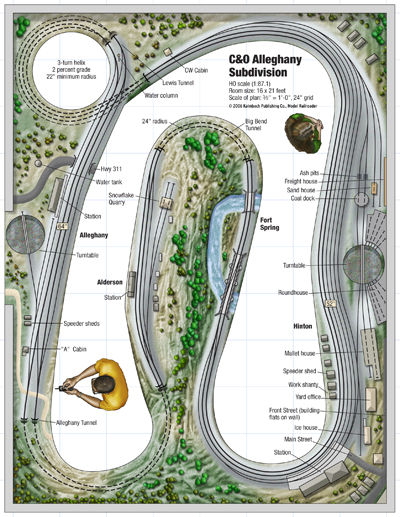
Track plan at a glanceName: Chesapeake & Ohio Alleghany SubdivisionScale: HO (1:87)Size: 16 x 21 feetPrototype: western end of the Alleghany SubdivisionEra: 1948-1952Style: walkaroundMainline run: 108 feetMinimum radius: 22″Minimum turnout: no. 8Maximum grade: 2.8 percentOriginally appeared in the June 2006 issue of Model Railroader.Click on the link to download a PDF of this track plan […]
Read More…
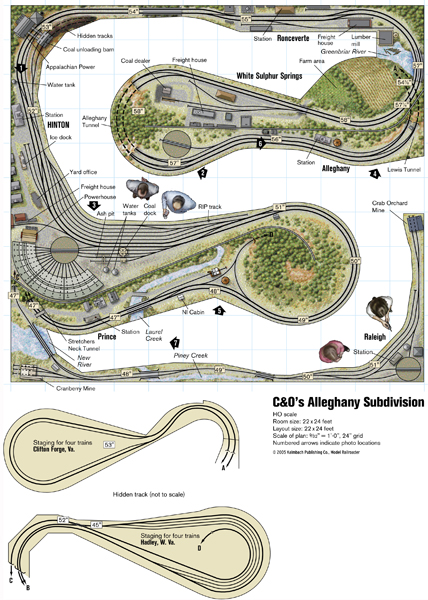
Track plan at a glanceName: Alleghany SubdivisionScale: HO (1:87)Size: 22 x 24 feetPrototype: Chesapeake & Ohio Ry.Period: summer 1947Style: walkaroundMainline run: 150 feetMinimum radius: 34″ main line, 28″ branch lineMinimum turnout: no. 6Maximum grade: 1.67 percentOriginally appeared in the February 2005 issue of Model Railroader. Also appeared in 102 Realistic Track Plans.Click on the link […]
Read More…
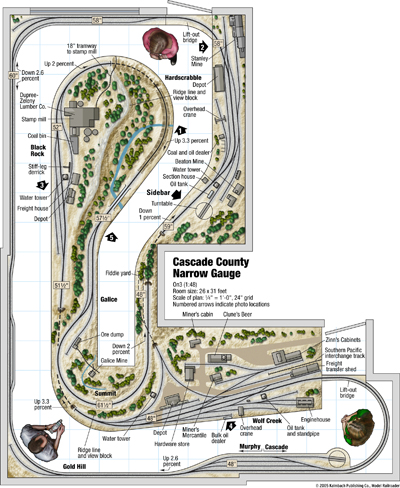
Track plan at a glance Name: Cascade County Narrow GaugeScale: On3 (1:48)Size: 26′-0″ x 31′-3″Prototype: Nevada County Narrow GaugeEra: mid-1920s to early 1930sStyle: walkaroundMainline run: 175 feetMinimum radius: 36″Maximum grade: 3.3 percentOriginally appeared in the January 2006 issue of Model Railroader.Click on the link to download a PDF of this track plan […]
Read More…
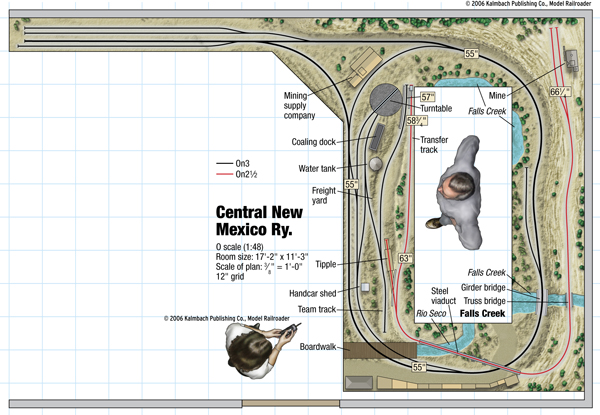
Track plan at a glance Name: Central New Mexico Ry.Scale: O scale (1:48 proportion), narrow gauge (On3 and On2.5)Size: 11′-3″ x 17’2″Theme: narrow gauge miningEra: 1905Style: island with an open centerMainline run: 34 feetMinimum radius: 28″Minimum turnout: no. 6Maximum grade: 8 percent on the On2.5 tram lineOriginally appeared in the July 2006 issue of Model […]
Read More…
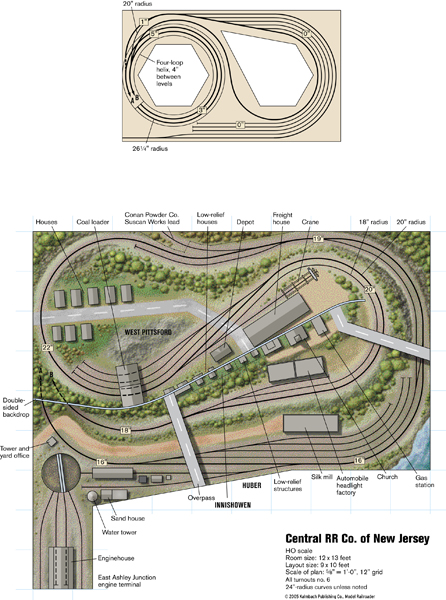
Track plan at a glanceName: Central RR Co. of New JerseyScale: HOSize: 9 x 10 feetMinimum radius: 24″Minimum turnout: no. 6Originally appeared in the March 2005 issue of Model Railroader. Also appeared in 102 Realistic Track Plans.Click on the link to download a PDF of this track plan […]
Read More…
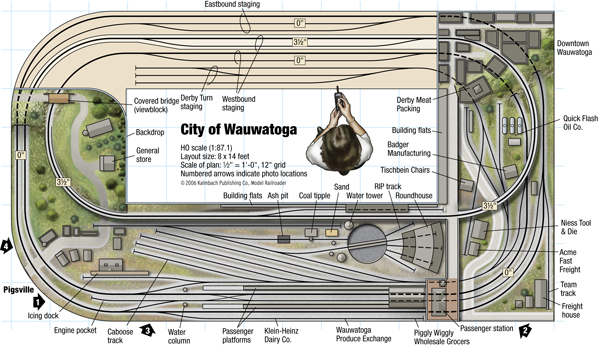
Track plan at a glanceName: City of WauwatogaScale: HO (1:87.1)Size: 8 x 14 feetPrototype: Milwaukee RoadEra: 1945-1965Style: portable islandMainline run: 40 feetMinimum radius: 24″ main line, 18″ industrialMinimum turnout: no. 6 main line, no. 4 industrial tracksMaximum grade: 4 percentOriginally appeared in the December 2006 issue of Model Railroader. Also appeared in 102 Realistic Track […]
Read More…
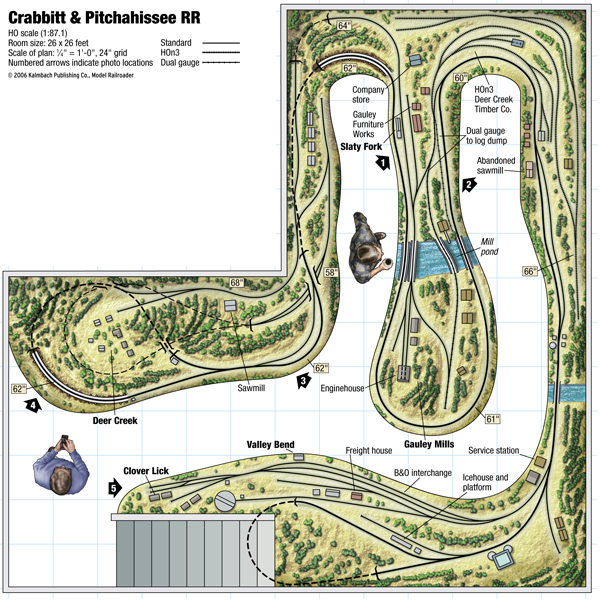
Track plan at a glance Name: Crabbitt & Pitchahissee RRScale: HO and HOn3 (1:87.1)Size: 26’0″ x 26’0″Period: 1920Style: walk-inMainline run: 124 feetMinimum turnout: no. 4Minimum radius: 24″Maximum grade: 7 percentOriginally appeared in the April 2006 issue of Model Railroader.Click on the link to download a PDF of this track plan […]
Read More…
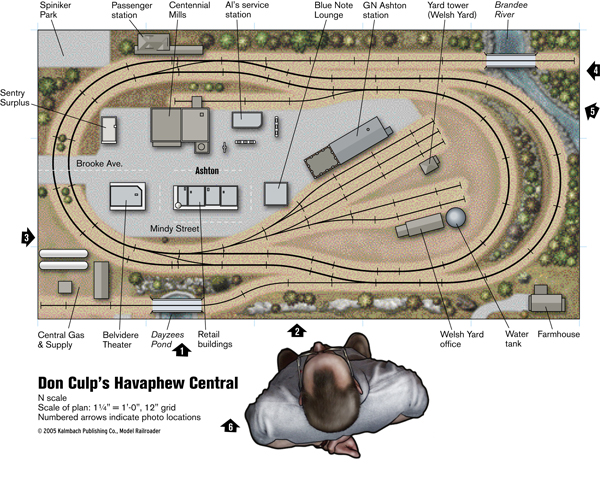
Track plan at a glance Name: Havaphew Central Scale: N (1:160) Size: 2′-6″ x 5′-0″ Prototype: free-lanced Great Northern Period: 1950s to 1960s Style: free-standing portable Mainline run: 13 feet Minimum radius: 9.75″ Minimum turnout: Atlas Custom Line Maximum grade: 0 Originally appeared in the March 2005 issue of Model Railroader. Also appeared in 102 […]
Read More…
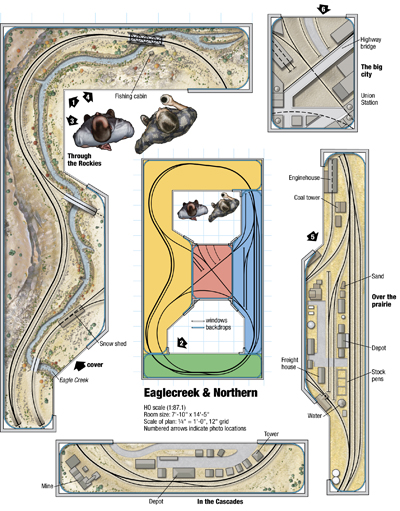
Track plan at a glanceName: Eaglecreek & NorthernScale: HO (1:87.1)Size: 7′-10″ x 14′-5″Prototype: Union PacificEra: 1953Style: dioramas viewed from operating pitsMainline run: 55 feetMinimum radius: 30″Minumum turnout: no. 6Maximum grade: noneOriginally appeared in the October 2006 issue of Model Railroader.Click on the link to download a PDF of this track plan […]
Read More…
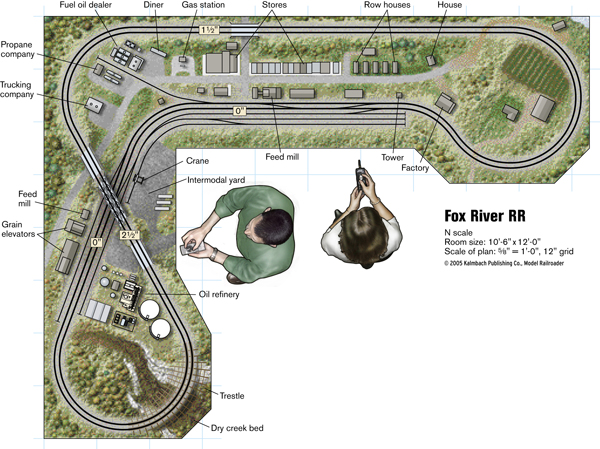
Track plan at a glanceName: Fox River RRScale: N (1:160)Size: 8 x 10.5 feetTheme: Midwest railroadEra: 1980sStyle: L shapedMainline run: 50 feetMinimum radius: 15″Minimum turnout: no. 4Maximum grade: 2 percentOriginally appeared in the June 2005 issue of Model Railroader. Also appeared in 102 Realistic Track Plans.Click on the link to download a PDF of this […]
Read More…
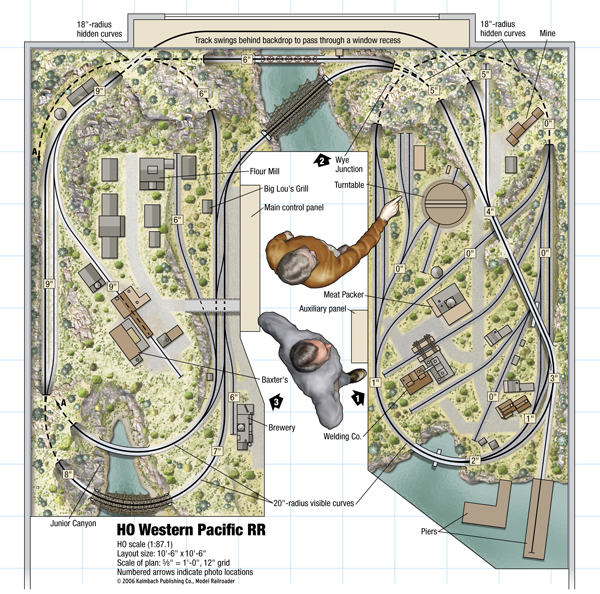
Track plan at a glanceName: Western Pacific RRScale: HO (1:87.1)Size: 9′-0″ x 10′-6″Prototype: freelanced using Western Pacific lettering and heraldsEra: 1935Style: walk-inMainline run: 63 feetMinimum radius: 18″Minimum turnout: no. 4Maximum grade: 3.5 percentOriginally appeared in the November 2006 issue of Model Railroader. Also appeared in 102 Realistic Track Plans.Click on the link to download a […]
Read More…
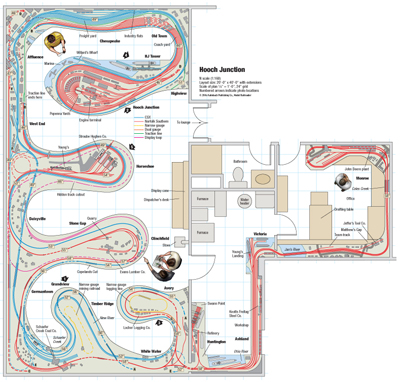
Track plan at a glanceName: Hooch Junction RRScale: N (1:160)Size: main room 20 x 40 feet, with 12 x 14-foot and 8 x 14-foot extensionsPrototype: Norfolk Southern, CSX, and predecessor linesEra: modernStyle: walk-inMainline run: 1,000 feetMinimum radius: 15″ main, 12″ yardsMinimum turnout: no. 4Maximum grade: 2.5 percentOriginally appeared in the September 2006 issue of Model […]
Read More…












